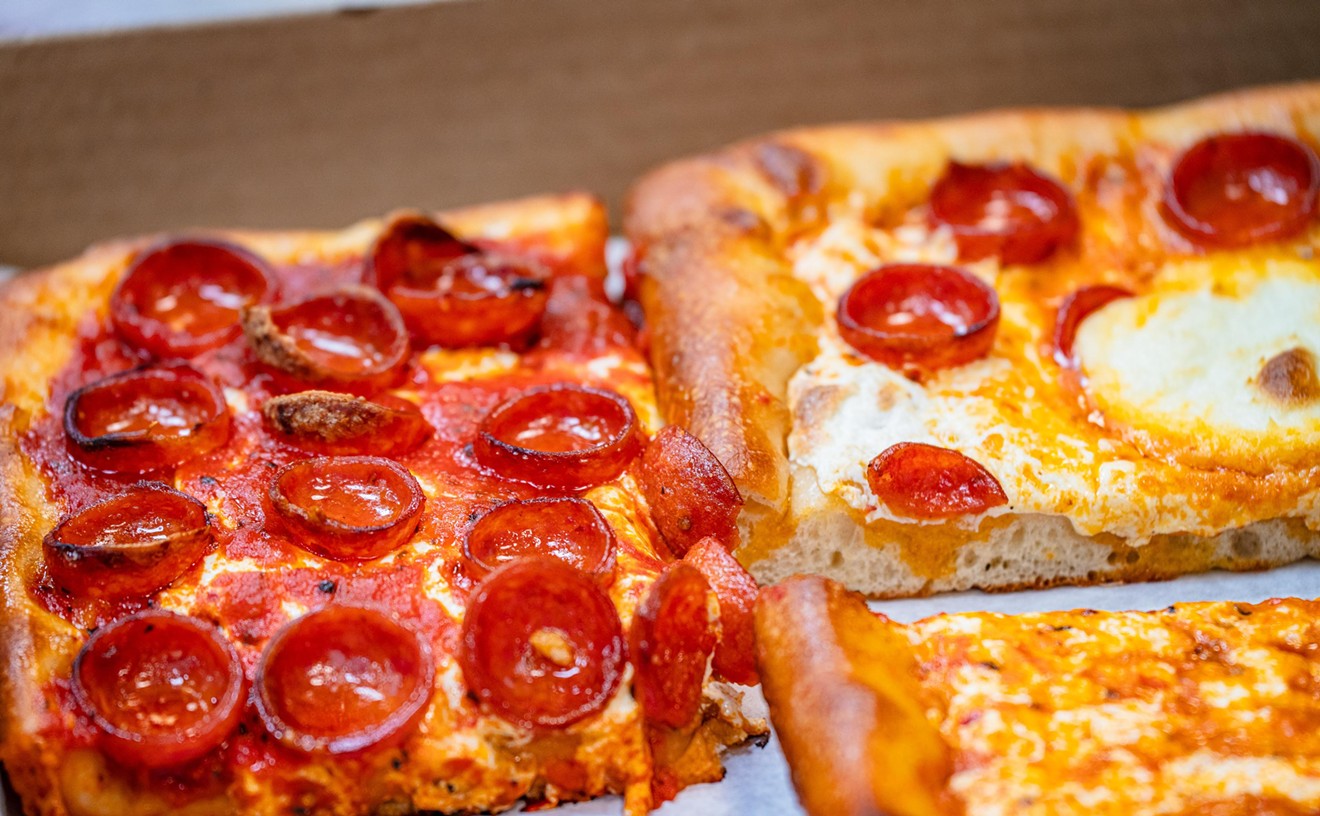In fact much of what we consumed belongs to the limited staple of Yucatecan specialties and street foods — humble, hearty, always freshly made, and oftentimes delicious. So is it fair that I compare the 50-cent fare of Yucatecan shantytowns with the decidedly more upscale cuisine of South Miami's newcomer, Poblano Cocina Mexicana? Not fair to Poblano, no. So I won't. Forget I even brought it up.
The 78-seat Poblano, located just off Sunset Drive, is a pleasantly designed space, with tall wooden chairs, brown Formica tabletops, and tasteful artwork on white walls. A bar area up front pours popular Mex beers (Corona, Tecate, Dos Equis, et cetera), a couple of dozen modest wines at modest prices, and a surprisingly refreshing wine-based margarita (though clearly less potent than ones made with tequila). A lime and cucumber drink proved zesty, too, and the limonada ... well, no, I'll resist comparison. I mean it was just fine. Very thirst-quenching. Except I will note that the trick is to use quartered, unpeeled limes, and to pulse for only a few precious seconds.
Diners are started with a rectangular plate featuring fresh tomato-chili salsa on one end, refried bean dip on the other, and in between a scattering of chips that appear to be a hybrid of tortillas and fried won ton noodles. The same fried crisps, dubbed "toasted tortilla strips," accompanied a salad of tomato, avocado, and nopal cactus pads that were laid out like a deck of cards, with Oaxacan string cheese strung along the top. Cactus is often poorly prepared in America's Mexican restaurants, but Poblano's crew knows just how to do it: The dark green rounds (a little okralike in texture) are softly seeped with a bright and potent oregano vinaigrette.
Likewise agreeable were fish tacos, a trio of pliable corn tortillas lightly filled with snippets of red snapper, onions, and cilantro, but by the time a starter of enchiladas Potosinas was served, I was beginning to grow weary of the preciousness of platings. More specifically, the enchiladas were so small and flat it seemed as if they'd been run over by a taco cart. The mini tortillas were made from savory red corn, and there was a hint of Oaxaca cheese within each paper-thin pocket, but even when dappled with lackluster guacamole, these were tasteless little things.
Quesadillas, tostadas, and chicken enchiladas in green sauce compose the other appetizers — smaller, more expensive versions of the real deals. It's as if authentic Mexican fare has been passed through a miniaturizing-and-deflavorizing machine. If only they'd roasted a whole pig on a spit, or stewed squash blossoms, or introduced some uncommon regional ingredients, or created a memorable molé, or served a basket of steamy hand-pressed corn tortillas, or simply mashed some really ripe avocados tableside in a molcajete. Sadly, though, when it comes to presenting simple south-of-the-border cuisine in a more upscale north-of-the-border context, the faux-haute Poblano can muster nothing more compelling than topping filet mignon with blue cheese and chipotle, or adding pineapple to the peppers, onions, and tortillas that accompany grilled flank steak and calling it "Caribbean fajitas."
There isn't much wrong, per se, with the food here; it just isn't that hot — in any sense of the word. A main course of halibut steak was moist and fresh enough, mildly piquant from a parsley-chili vinaigrette that tended toward the salty side. Pieces of asparagus around the fish were well soaked in the same dressing — marinated, really, to delectable advantage — but a pile of cold white rice taking up most of the plate tasted like Uncle Ben's. The same dull grains accompanied small grilled pieces of duck breast that were extremely unducklike; if there were such a thing as duck McNuggets, they would look and taste just like these. The bird bits were buried in a middling brown molé sauce, more sweet than spicy, with a few wispy strands of fried leeks lying on the plate for no apparent reason. Talla-style beef medallions brought two spicily seasoned fillets of a strangely tough cut, sided by savorily sautéed nopales and a poblano chili shell holding a smidgeon of refried beans and melted cheese. This steak and other entrées are presented atop banana leaves but not cooked inside them. I can't think of a better metaphor for the problem with Poblano.
"Buñuelos and apple Napoleon" was sappy enough to serve as an insult to both the former French emperor and the cream-laden pastry. A few piddly squares of fried tortilla, a little lardy in taste underneath the sprinklings of cinnamon and sugar, were piled with couplings of dry apple slices in between. A cajeta-tequila sauce smudged on the plate didn't add much, and cinnamon ice cream added too much — so intensely flavored, it was like licking cinnamon powder. A scoop of pistachio ice cream, of the neon green color only a dye manufacturer could love, came bobbing in sugary coconut soup. Pistachio nuts, vanilla torrijas (a type of fried bread pudding that translated here to just hard cubes of white bread), and thin sheets of not-quite-ripe mango also floated in the soup, altogether resembling confections tossed overboard from a doomed candy ship. Caramelized mango tart with buttery crust was better. So is much of the food that poor people are currently eating in the Yucatan. Sorry. Couldn't resist.










